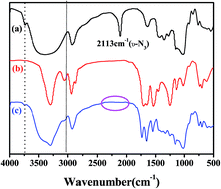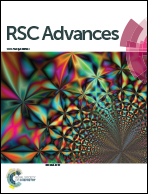Reduction-sensitive amphiphilic dextran derivatives as theranostic nanocarriers for chemotherapy and MR imaging
Abstract
Reduction-sensitive, amphiphilic dextran derivatives were developed from disulfide-linked dextran-g-poly-(N-ε-carbobenzyloxy-L-lysine) graft polymer (Dex-g-SS-PZLL), and used as theranostic nanocarriers for chemotherapy and MR imaging. Dex-g-SS-PZLLs were synthesized by click conjugation between azidized dextran (Dex-N3, 40 kD) and α-alkyne-SS-PZLL (degree of polymerization = 10, 15 and 25). The chemical structures of dextran derivatives were characterized by Fourier transform infrared spectroscopy and nuclear magnetic resonance analyses. Owing to their amphiphilic nature, these copolymers can self-assemble into spherical nanosized micelles in an aqueous medium, as confirmed by fluorometry, transmission electron microscopy and dynamic light scattering. Interestingly, the hydrodynamic radii of the micelles (65–100 nm in diameter) were dependent on the block length of PZLL, and their critical micelle concentrations were in the range of 0.020–0.007 mg mL−1, which decreased as the length of PZLL increased. The anticancer drug doxorubicin (DOX) and superparamagnetic iron oxide (SPIO) nanoparticles (NPs), as the magnetic resonance imaging (MRI) contrast agent, were simultaneously encapsulated in the hydrophobic core of the micelles by the dialysis method. The release profiles of encapsulated DOX from SPIO/DOX-loaded micelles were shown to be rapid in the presence of 10 mM glutathione (GSH) within 24 h, whereas less than 30% DOX was released from reduction insensitive Dex-g-PZLL micelles in 48 h. Only about 35% DOX was released from Dex-g-SS-PZLL micelles in the same timeframe. According to the in vitro cytotoxicity test, it was found that reduction-sensitive micelles showed higher toxicity to HepG2 cancer cells than the reduction-insensitive micelles incubated with equivalent DOX concentration. Flow cytometry and fluorescence microscopy analyses further demonstrated that the reduction-sensitive micelles exhibited faster drug release behavior than reduction-insensitive micelles, which also led to higher cytotoxicity. The SPIO/DOX-loaded micelles demonstrated excellent MRI contrast enhancement, and the r2 relaxivity values of the SPIO/DOX-loaded micelles were up to 261.3 Fe mM−1 s−1. Consequently, these reduction-sensitive amphiphilic dextran derivatives are promising theranostic nanocarriers for MR imaging and chemotherapy.


 Please wait while we load your content...
Please wait while we load your content...